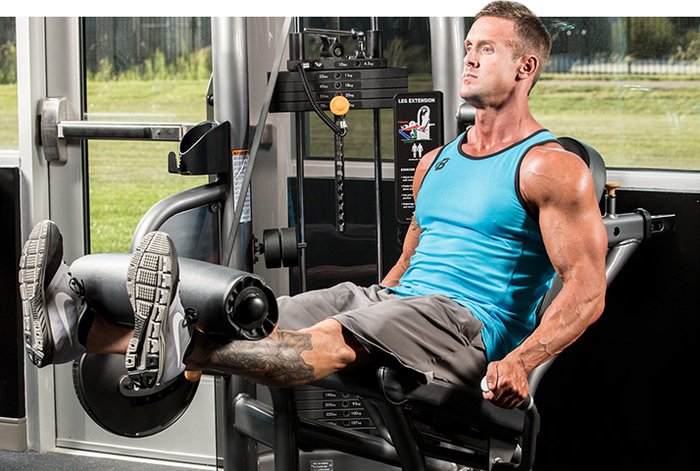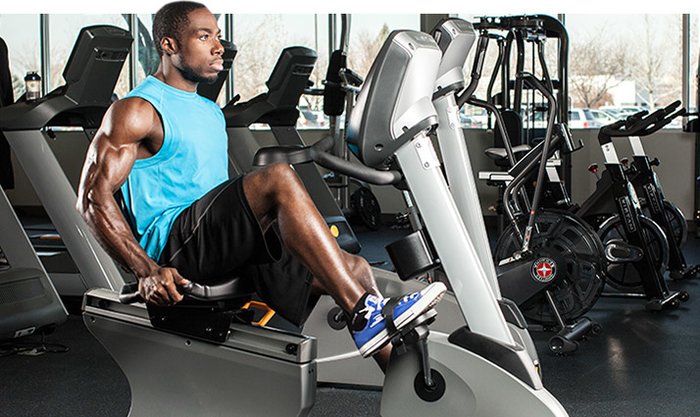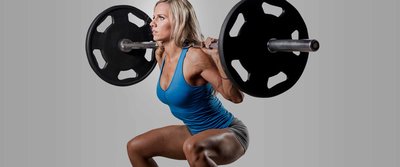Do you suffer from knee pain? Have you previously had an injury to the knee? Do you experience joint pain around the knee when training legs?
If you answered yes to any of those questions—this article should be able to help you. Knee injuries are very common. And knee pain can really affect your leg workouts. I will share some tips and techniques that will help prevent and repair knee pain when training legs.
First of all, legs are one of the most important body parts to train. They are often neglected by many gym-goers (only interested in training biceps and chest!). And the reason is obvious—training legs is not fun! You use your legs to walk around all day.
To stimulate growth, they must be trained with extreme intensity and trained to failure. An existing knee injury or joint pain can greatly impact your leg workouts and prevent additional muscle growth. So here are some tips and tricks that should be applied to your weekly leg workouts:
1. Take time to warm-up!
- No matter what exercise comes first in your workout routine, you can't just jump into heavy weights without doing some warm-up sets.
- Never start a 400 pound leg press without warming up with lighter weights first.
- Never squat 200 - 300 pounds without doing some warm-up sets first.
- I recommend doing one or two warm-up sets of leg extensions before starting any other leg exercise. Keep the weight fairly light and complete 20 to 30 slow, controlled reps. You will then get the blood flowing in and around the knee as well as warm-up the quad muscles of the leg.
- Additionally, you may want to perform a warm-up set of leg presses with a fairly light weight (before starting other leg exercises). Again, try to complete 20 to 30 slow, controlled reps.

I recommend doing one or two warm-up sets of leg extensions before starting any other leg exercise. Keep the weight fairly light and complete 20 to 30 slow, controlled reps.
2. Don't Lock-Out Your Knees On Any Leg Exercise!
- When performing a leg press or leg extension movement like squats or seated leg press, do not fully lock-out your knees.
- Locking your knee joint transfers all of the weight from the muscle to the joint. The result is un-needed stress on the knee that can lead to injury.
- By not fully locking your knees - you will keep the tension on the muscle and you will experience a more intense set at your current weight.
- If you are unable to complete your set without locking your knees, the weight is too heavy and must be lowered.
- The only exception to this rule is with seated leg extensions and stiff-legged deadlifts.
3. Learn To Squat With Proper Form!

- I see too many people that squat on the balls of their feet - instead of their heels.
- Do not let your knees come forward as you descend.
- Stick your butt out, and keep your back arched (Do not Round) as you descend.
- When you ascend, you should be pushing off the heel of your foot—not your toes. If you have trouble doing this, try squatting without any shoes on. Many athletic shoes have a very thick sole that when squatting - forces your body forward (and onto your toes).
4. Do Not Use More Weight Than You Can Handle!
- Make sure you are able to complete the full range of motion for any leg exercise you are performing.
- If you cannot—you are probably using too much weight. Lower the weight and perform the exercise correctly (you are only cheating yourself!).
- For example, I see too many people step into the smith-machine to squat. They put 315 pounds on the bar—and yet only descend 4 to 6 inches (no-where near parallel). If they were to complete the full range-of-motion for a squat—they would not be able to even do one rep. This only leads to injury—and does not fully stimulate the muscles of the legs.
5. Think About Your Knees When Performing Cardio
- You may want to avoid exercises like running (whether on the treadmill or road). The impact of your feet slamming the pavement may irritate an existing knee injury.
- An elliptical trainer or stationary bike may be easier on your knees. If you utilize an elliptical trainer, lower the incline (height) to lessen the stress on your knees.

An elliptical trainer or stationary bike may be easier on your knees.
Conclusion
If you follow the tips listed above, you should be able to still train legs intensely. If you don't suffer from knee pain—these tips should help you prevent any future problems. If you have an existing knee injury, these tips can help alleviate the pain and allow you to continue training.

